Microsoft BUILD: Windows 8, A Pre-Beta Preview
by Brian Klug & Ryan Smith on September 13, 2011 12:05 PM EST- Posted in
- BUILD
- Windows
- Microsoft
- Windows 8
- Trade Shows
Mobile Experience Side
Coming from the smartphone side of things, I really see many shades of WP7 inside Windows 8. That’s actually dramatically understating the state of things - the core of what we’ve been shown of Windows 8 that’s new literally is either adopted from or directly analogous to much of WP7.
It doesn’t come as a surprise to me at all that the desktop Windows experience is moving in this direction, (and it seems as though the Xbox 360 interface will follow shortly). The positive result is that Windows 8’s touch experience feels much closer to the ground-up approach Android Honeycomb or iOS have taken than the than the “Tablet-Edition” versions of Windows XP and the tablet integration in Vista and 7. I used a UMPC and remember Origami and how that application lived as its own standalone mode of operation as an application within windows. What Windows 8 is the inverse - Windows now lives inside a Metro-themed Start screen that looks like WP7 for the desktop. Or at least it does in this demo we’ve been shown currently.
The tablet experience is now absolutely on par with modern mobile OSes - sure there are a few more things that need to be included, but the foundation is there for Windows to suddenly become more than an OS that also can do touch-based interaction.
IE 10
Microsoft has been actively promoting IE 10 since MIX 11, with two platform previews so far, and IE 10 is an integral part of Windows 8 both as a browser and as a runtime for HTML based Metro applications. We won’t go into exacting detail about what’s new and interesting inside IE10, beyond mentioning that it improves upon IE 9’s GPU acceleration and improves web compliance support including CSS3. What’s relevant in Windows 8 is that IE 10 gets two views - one belonging to the Metro-heavy start menu experience, which we’ll call the mobile view, and the other belonging to the traditional desktop windows view.
This dichotomy exists between the two IE10 experiences, which is in itself a bit curious. The mobile view is almost exactly what IE looks like inside Windows Phone 7.5 - at the bottom is the URL bar and controls, and with a slide down gesture, at the top are tabs. Meanwhile the IE10 desktop experience uses the older IE 9 UI. At this point, it doesn’t appear that windows opened in one are transportable to the other.
The mobile view is almost exactly like WP7.5’s however, the URL bar disappears when scrolling, and the browser supports a completely fluid multitouch experience that feels speedy.
Cloud
Windows 8 offers considerable integration with Windows Live and SkyDrive. Local user accounts can be directly tied to a Live account on trusted PCs, and then be used for live roaming. Live roaming enables each connected device to access the same set of accounts for photos, email, calendar, and contacts and speed up initial setup. For example, photos captured on a WP7.5 device’s camera roll can be immediately visible on a Windows 8 PC authenticated against the same Live account. This is very close to how camera roll will integrate into Apple’s iCloud and synchronize across iOS and OS X Lion.
One thing is clear, and it’s that Microsoft plans to heavily integrate and leverage its Live services into Windows 8 and provide an ecosystem-wide way to migrate accounts settings, photos, and data between mobile, tablet, and desktop.
Samsung’s Reference Tablet
We’ve been loaned Samsung tablets running the Windows 8 Evaluation copy used for this article, and thought it bears going over since the device will no doubt become a reference platform for Windows 8 development. This hardware is also being given away to developers in attendance at BUILD as well.
The Samsung tablet is none other than the 700T model announced at IFA very recently, and it packs a relatively impressive spec list.
| Samsung 700T Windows 8 Development Notebook/Slate - Specifications | |
| Processor |
Intel Core i5-2467M (2x1.6GHz + HT, 32nm, 3MB L3, 2.3GHz Turbo, 17W) |
| Chipset | Intel 6 series |
| Memory | 4 GB DDR3 1333MHz RAM (1 SODIMM) |
| Graphics | Intel HD 3000 |
| Display | 11.6" Super PLS (1366x768) |
| Hard Drive | 64 GB Samsung SSD |
| Networking | 802.11n WiFi + Gigabit Ethernet + GSM/WCDMA HSPA+ |
| Sensors | NFC, Magenetometer, Accelerometer, GPS, ALS, Front, Rear Camera |
| Dimensions | 12.9 mm thick, 909 grams |
The 700T includes GSM/WCDMA cellular connectivity courtesy of an Option GTM661W combination cellular modem and WiFi card. The GTM661W uses a Qualcomm MDM6200 baseband, which also provides GPS. There are also sensors such as ambient light, an accelerometer, and the two cameras onboard.
In addition, the 700T includes an active digitizer and capacitive touch display, making it suited for all three interaction modes that Windows 8 will support. The device comes with a dock that doubles as a charging stand, and also replicates full size HDMI, GigE, and a USB 2.0 port on the back. The slate has one USB 2.0 port, a headphone jack, microSD card slot, SIM slot, and a rotation lock button.
Samsung calls the 700T a slate, we've elected to call it a tablet, and the device feels decent if not a bit heavy in the hands. The 700T is also the first 16:9 tablet we've seen, with Android adopting 16:10 and iOS going with 4:3, which makes portrait a bit extreme.


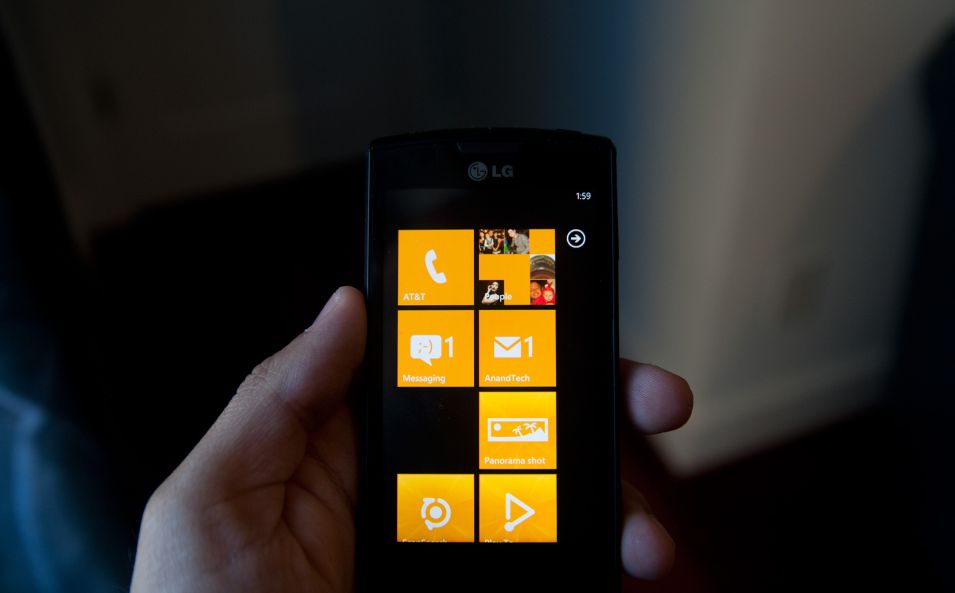
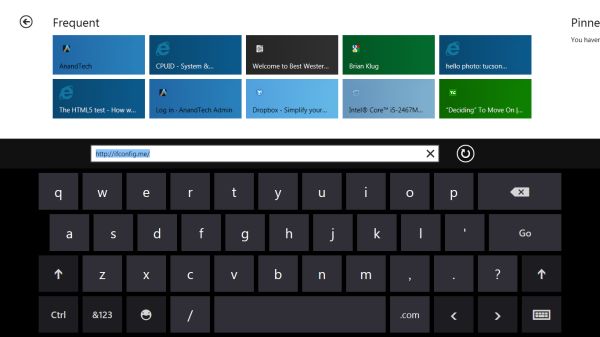
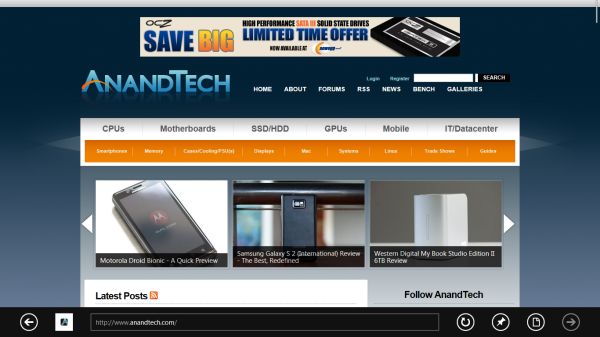
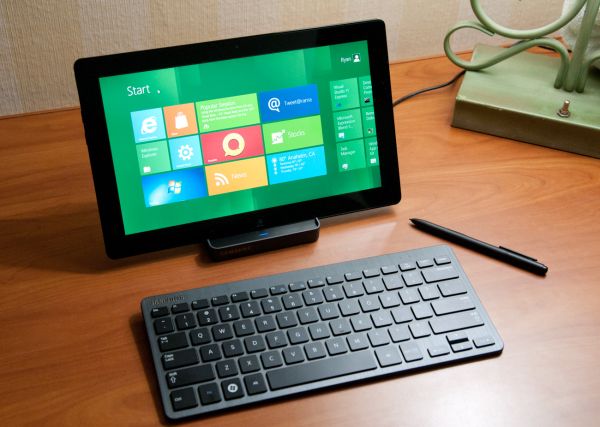
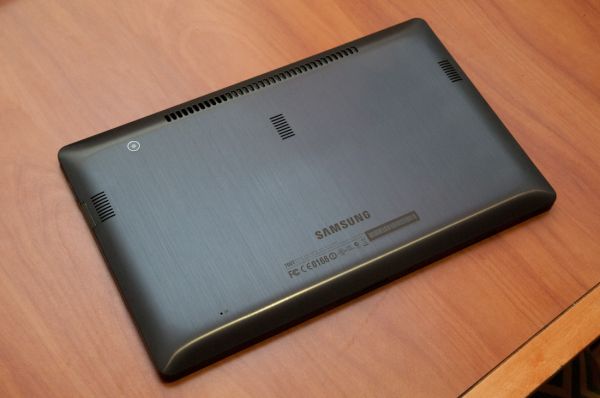
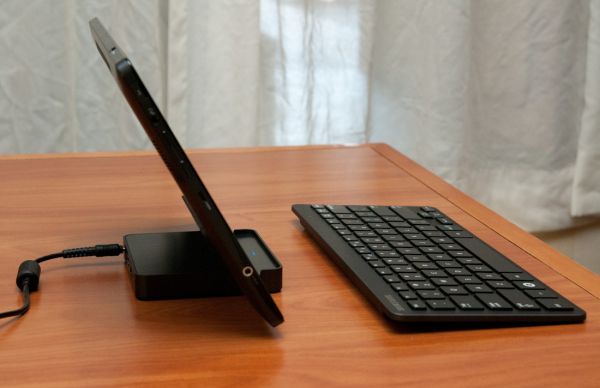








235 Comments
View All Comments
ilkhan - Wednesday, September 14, 2011 - link
I think MS is going to have even more of a problem getting people off of 7 and onto 8 than they did getting people off XP and onto Vista, for the same reason.From what I can see here, visually and productively 8 is going to be even worse than Vista.
MrBungle123 - Wednesday, September 14, 2011 - link
I agree... If this is windows 8, I'll be buying 10 or 15 copies of Windows 7 OEMs before the Win 8 launch pushes them off newegg.nofumble62 - Thursday, September 15, 2011 - link
why bother?thrasher32 - Thursday, September 15, 2011 - link
I don't want my office PC desktop to look like a windows phone/tablet display. If this is Windows 8 then I'll stick with 7, and I'm usually the guy that buys the new version of Windows on the day it's released.Saidas - Thursday, September 15, 2011 - link
From what I understand, you will be able to disable Metro. I plan on doing so for my desktop and lappy and using it for my tablet and Smartphone. Perfect.Rand - Thursday, September 15, 2011 - link
As the article said, and Microsoft said at Build. You cannot disable Metro. It is there from tablets on up to servers.Any application launches and system configuration, and bootup etc always goes through Metro.
Moricon - Thursday, September 15, 2011 - link
To sum it up, this is just a huge pile of FAIL!!!I see a massive backlash from the Tech world.
Give us improvements to the OS, Give us better performance, Give us new useful features but for GODS SAKE remove Metro from desktop use!
Its fine for tablets ( MEH to be fair) but it is completely pointless for dektop use for anyone who auctually does any work on the PC.
As for Windows Live integration, Yeah lets see how happy people are having to create a Live ID just to add on another user acount!
FAIL FAIL FAIL FAIL FAIL FAIL FAIL FAIL FAIL"!"!!"!"
I build and repair Windows PC's for a living, have done so for years, and I can honestly say this is all wrong!
F*****G Social Application Integration into the OS ( FFS Only teenagers and losers want this)
Stupid gestures to navigate the OS
Tile based huge icons are crap ( What are we all running VTECH Kit designed for kids now)
XBOX Live Integration FFS who the blast gives a shit except XBOX Users! People who work are NOT cared about XBOX Integration.
I do hope they allow metro to be switched off!
Wellsoul2 - Thursday, September 15, 2011 - link
I really like the idea of using this OS with my HTPC though since it will make iteasier to use all my programs with a remote control. The article didn't address
that but the future may also be using your computer hooked to a TV alot of the time.
For that purpose this is a good beginning.
Like Media Center it's clunky but functional for a remote control.
Wish they had a switch so you could change to high res Win7 desktop for mouse/keybd though.
Taurus229 - Thursday, September 15, 2011 - link
It is very sad that Microsoft is building a new OS for tablets and netbooks and totally ignoring the desktop power user. My thought at this point is that win 7 is the desktop os, and win 8 will be the mobile os. Microsoft has made it's bed, and will have to lie in it. Just too bad!Booster - Thursday, September 15, 2011 - link
MS can't be that stupid, honestly. Even Windows 95 has better multitasking than Metro. They're abandoning the whole Windows concept where you can have multiple windows open at the same time and switch between them. Metro on the other hand lets you do only one thing at a time.Just through how many screens of dumba$ tiles do I have to scroll to copy a text for citation from a web page and insert it into a word document, for example?
Metro is destined to fail epically. It's better if MS realized this sooner than later, gave those responsible the boot and start working on a major overhaul. This isn't going to fly, people, don't you see it? Even Apple wouldn't allow itself to cripple it's users so foolishly. Hell, people resisted Vista like there was no tomorrow, just how exactly MS plans on shoving this disfunctional POS down their throats once users realize they can't do what they need to do with Metro, like at all???